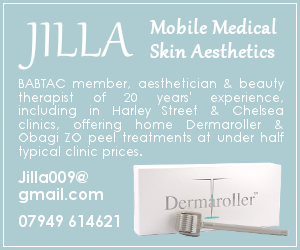Dermal fillers have revolutionized the world of cosmetic procedures, providing an effective means to achieve a youthful appearance without the need for invasive plastic surgery. These injectable treatments are designed to smooth lines, add volume, and enhance facial contours, addressing various signs of aging and other aesthetic concerns.
What are Dermal Fillers?
Injectable dermal fillers are soft tissue fillers used to fill in wrinkles, deep lines, and hollow areas of the face. They are primarily made from natural or synthetic substances that mimic the body’s own tissues. Among the most popular types of dermal fillers is hyaluronic acid, a natural substance found in the skin that helps maintain hydration and elasticity. Hyaluronic acid fillers (HA fillers) are commonly used due to their effectiveness and safety profile.
Types of Dermal Fillers
The market offers a range of dermal filler products, each formulated for specific uses and outcomes. The main types of dermal fillers include:
- Hyaluronic Acid Fillers: These fillers are versatile and can treat various areas, including nasolabial folds, thin lips, and recessed scars. HA fillers attract and hold moisture, adding volume and smoothing wrinkles.
- Calcium Hydroxylapatite: This mineral-like compound is found in human bones and is used in fillers to treat deeper wrinkles and folds. It stimulates collagen production for long-lasting results.
- Poly-L-Lactic Acid (Polylactic Acid): Known for its collagen-stimulating properties, this filler gradually improves skin texture and volume over time.
- Semi-Permanent Fillers: These fillers provide longer-lasting results by integrating with the body’s tissues, making them ideal for deep nasolabial folds and other significant volume loss areas. Polymethyl-methacrylate microspheres (PMMA) are a common example of a semi permanent filler. PMMA is used to treat wrinkles, folds, furrows, scars, and augment lips. Multiple injections are often required, with full effects realized over three months. It is crucial to have a skilled plastic surgeon perform the injections to avoid visibility under the skin.
Dermal Filler Procedures
A dermal filler injection typically involves the injection of the filler substance into the targeted areas using fine needles. Before the procedure, a local anesthetic may be applied to minimize discomfort. The injection sites are carefully chosen based on the individual’s facial anatomy and desired outcomes. A single session can take anywhere from 15 minutes to an hour, depending on the extent of the treatment.
Benefits of Dermal Fillers
Filler treatment injections offer numerous benefits, including:
- Immediate Results: Most patients notice an immediate improvement in the treated areas, with full results becoming apparent within a few days.
- Minimal Downtime: Unlike surgical procedures, dermal filler treatments require little to no recovery time, allowing patients to resume their normal activities almost immediately.
- Natural-Looking Outcomes: When performed by a skilled practitioner, dermal fillers can provide subtle and natural enhancements that maintain facial harmony.
Common Treatment Areas
Dermal fillers can address a variety of concerns, including:
- Facial Wrinkles: Filler injections are effective for treating crow’s feet, frown lines, and smile lines, reducing their appearance and smoothing the skin.
- Thin Lips: Fillers can add volume and definition to thin lips, creating a fuller and more balanced look.
- Nasolabial Folds: These deep lines running from the nose to the mouth can be softened with fillers, restoring a youthful appearance.
- Acne Scars: Dermal fillers can fill in recessed scars, improving skin texture and appearance.
- Sagging Skin: By adding volume and lifting sagging areas, fillers can rejuvenate the overall facial structure.
Potential Risks and Managing Complications
While dermal filler injection is generally safe, it is not without potential risks. Adverse events can include allergic reactions, skin necrosis, and tissue death at the injection site. Choosing a board-certified dermatologist or plastic surgeon for the procedure can significantly reduce these risks. Managing complications involves prompt medical attention and appropriate treatments, such as oral antibiotics for infections or other necessary interventions.
Types of Dermal Fillers: Detailed Insights
Understanding the various types of dermal fillers available can help you make an informed decision about which treatment is best suited to your needs. Each filler type has unique properties that make it ideal for different applications.
Hyaluronic Acid Fillers
Hyaluronic acid (HA) fillers are among the most popular choices in dermal filler procedures. This natural substance is found in the body and is known for its ability to retain moisture, contributing to skin plumpness and elasticity. HA fillers, such as Juvederm and Restylane, are highly versatile and can be used to address various concerns, including:
- Nasolabial Folds: HA fillers are effective in softening the appearance of these deep lines, providing a more youthful look.
- Thin Lips: These fillers can enhance lip volume and contour, giving a fuller appearance.
- Acne Scars: By filling in recessed scars, HA fillers improve the overall texture of the skin.
- Crow’s Feet and Frown Lines: HA fillers smooth out these fine lines, reducing their visibility and creating a more refreshed look.
Calcium Hydroxylapatite
Calcium hydroxylapatite is a mineral-like compound found in human bones. This type of filler is thicker than HA fillers, making it suitable for treating deeper wrinkles and folds. It also stimulates collagen production, which helps maintain results over time. Radiesse is a well-known filler in this category, used for:
- Deep Nasolabial Folds: Its robust nature makes it ideal for treating significant volume loss.
- Facial Contouring: This filler can enhance cheekbones and jawline, providing a more defined facial structure.
- Recessed Scars: It effectively fills in deeper scars, improving skin smoothness.
Poly-L-Lactic Acid (Polylactic Acid)
Poly-L-lactic acid (PLLA) fillers, such as Sculptra, are known for their collagen-stimulating properties. Unlike other fillers that provide immediate results, PLLA works gradually, with improvements becoming noticeable over several months as collagen production increases. This type of filler is used for:
- Facial Volume Loss: It helps restore volume to areas like the cheeks and temples.
- Deep Wrinkles: PLLA is effective in treating deeper lines and folds, such as nasolabial folds.
- Overall Skin Texture: By stimulating collagen, it improves the skin’s overall texture and firmness.
Semi-Permanent Fillers
Semi-permanent fillers, also known as semi permanent fillers, offer longer-lasting results compared to other fillers. They integrate with the body’s tissues, making them suitable for treating significant volume loss and deeper wrinkles. These fillers are ideal for:
- Deep Nasolabial Folds: They provide long-lasting correction for these pronounced lines.
- Sagging Skin: Semi-permanent fillers add volume and lift sagging areas, rejuvenating the facial structure.
The Dermal Filler Procedure: What to Expect
Undergoing a dermal filler procedure involves several steps to ensure safety and effectiveness. Here’s what you can typically expect:
- Consultation: A thorough consultation with a board-certified dermatologist or plastic surgeon is essential to discuss this non-surgical procedure. During this consultation, your practitioner will assess your facial anatomy, discuss your aesthetic goals, and determine the most suitable type of filler for you.
- Preparation: On the day of the procedure, the treatment area will be cleaned, and a local anesthetic may be applied to minimize discomfort. The practitioner will then mark the injection sites based on the treatment plan.
- Injection: Using a fine needle, the practitioner will inject the dermal filler into the targeted areas. The number of injections and the amount of filler used will depend on the extent of the treatment and the desired results.
- Post-Treatment Care: After the procedure, you may experience some swelling, redness, and bruising at the injection sites. These side effects are typically mild and resolve within a few days. Your practitioner will provide specific aftercare instructions to ensure optimal results and minimize complications.
Managing Complications and Risks
While injectable dermal fillers are generally safe, it’s important to be aware of potential risks and complications. These can include:
- Allergic Reactions: Although rare, some individuals may experience an allergic reaction to the filler material.
- Infection: Proper sterilization and technique are crucial to prevent infections. If an infection occurs, oral antibiotics may be necessary.
- Tissue Death and Skin Necrosis: In rare cases, improper injection techniques can lead to tissue death or skin necrosis. Prompt medical attention is required if these serious adverse events occur.
- Adverse Events: Other possible adverse events include lumps, asymmetry, and prolonged swelling.
Choosing a qualified and experienced practitioner is key to minimizing these risks. A board-certified dermatologist or cosmetic surgeon will have the expertise to perform the procedure safely and manage any complications that may arise.
Conclusion
Dermal fillers offer a versatile and effective solution for those looking to enhance their appearance and combat the signs of aging. By understanding the different types of dermal fillers and what to expect during a dermal filler procedure, you can make informed decisions and achieve your desired results. Whether you’re looking to smooth facial wrinkles, add volume to thin lips, or treat deep nasolabial folds, dermal fillers provide a minimally invasive option for a more youthful and refreshed appearance.








